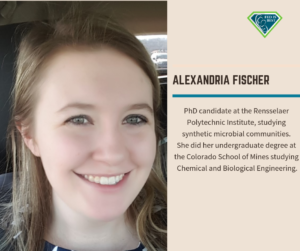BY ALEXANDRIA FISCHER, PHD CANDIDATE AT THE RENSSELAER POLYTECHNIC INSTITUTE, STUDYING SYNTHETIC MICROBIAL COMMUNITIES
The long list of things that we are told breastmilk can do seems to be never ending. The newest addition to the list is that stem cells in breast milk can travel from the gut to the brain of a breastfeeding infant. The linked news article says stem cells in breast milk have been seen in the brains of babies. They go on to say that breastfed babies are known to have higher IQs than formula fed babies, a fact that is decidedly false when studies control for socioeconomic factors. There is then an implication of some sort of mechanism between stem cells in the brain and an increased intelligence.
But upon closer examination of the evidence, stem cells haven’t been seen in the brains of human babies, but rather the brains of mice pups.
I have examined this study and described the methods as well as the strengths and weaknesses of it below. This study sought to track cells in breast milk from a mouse to pups that she is nursing. To do this they used mice that have and have not been tagged with a protein called GFP. GFP is a protein originally found in jelly fish, that glows green under certain conditions. In this study tagged mice fed untagged mice, allowing the researchers to look for glowing in the brains of the baby mice, to see if cells from breastmilk travelled from the guts to the brains. First the researchers looked at fluorescence or glowing in breastmilk of tagged and untagged mice. They did show that only the tagged milk glowed, however, they did not determine cell types in the milk, meaning we cannot make the determination that it is stem cells that they are tracking. The researchers then claim to have found the stem cells from breastmilk in the brains via glowing in brain tissue samples from mice pups fed from GFP tagged mice. However, this study lacked a control group where fluorescence was measured in untagged pups fed by untagged mother mice, meaning we have no baseline “glow” to compare results too. However, without a negative control (brain samples from an untagged pup fed by an untagged mother) we cannot make a determination about this data being artifacts of auto-fluorescence (background noise). This lack of a control is very concerning in light of the STAP cell fiasco, when major claims were made based on auto-fluorescence of stressed cells, rather than fluorescence due to changes applied by the researchers.
This paper is highly technical, but deeply flawed in the methods. They have failed to show adequate proof that a delicate stem cell can survive the acidic environment of the stomach and travel to the brain. However, even if we accept these unproven claims of breastmilk stem cells in the brain, long term data shows that the point is moot, as cognitive outcomes are equivalent in breastfed and formula fed infants.

Alexandria Fischer is a PhD candidate at the Rensselaer Polytechnic Institute, studying synthetic microbial communities. She obtained her undergraduate degree at the Colorado School of Mines studying Chemical and Biological Engineering. Alexandria came to know the Fed is Best Foundation when struggling to breastfeed her daughter. There she learned that many of the benefits of breastfeeding are vastly overstated and became a part of the advisory team. As a scientist, she is passionate about communicating science to the general public in an approachable and accurate way. She uses her scientific training to evaluate current infant feeding research for strengths and weaknesses, helping to dispel misinformation commonly circulated in the discourse surrounding breastfeeding.
An Evaluation Of The Real Benefits And Risks Of Exclusive Breastfeeding.
https://www.nature.com/articles/s41598-018-32715-5
HOW YOU CAN SUPPORT THE FED IS BEST FOUNDATION
There are many ways you can support the mission of the Fed is Best Foundation. Please consider contributing in the following ways:
- Join the Fed is Best Volunteer group to help us reach Obstetric Health Providers to advocate for counseling of new mothers on the importance of safe infant feeding.
- Make a donation to the Fed is Best Foundation. We are using funds from donations to cover the cost of our website, our social media ads, our printing and mailing costs to reach health providers and hospitals. We do not accept donations from breast- or formula-feeding companies and 100% of your donations go toward these operational costs. All the work of the Foundation is achieved via the pro bono and volunteer work of its supporters.
- Share the stories and the message of the Fed is Best Foundation through word-of-mouth, by posting on your social media page and by sending our resources to expectant moms that you know. Share the Fed is Best campaign letter with everyone you know.
- Write a letter to your health providers and hospitals about the Fed is Best Foundation. Write them about feeding complications your child may have experienced.
- Print out our letter to obstetric providers and mail them to your local obstetricians, midwives, family practitioners who provide obstetric care and hospitals.
- Write your local elected officials about what is happening to newborn babies in hospitals and ask for legal protection of newborn babies from underfeeding and of mother’s rights to honest informed consent on the risks of insufficient feeding of breastfed babies.
- Send us your stories. Share with us your successes, your struggles and everything in between. Every story saves another child from experiencing the same and teaches another mom how to safely feed her baby. Every voice contributes to change.
- Send us messages of support. We work every single day to make infant feeding safe and supportive of every mother and child. Your messages of support keep us all going. Thank you for your advocacy!
